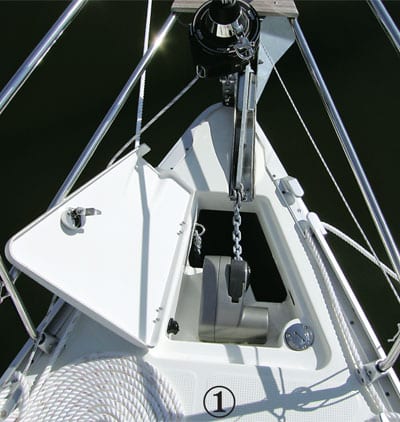
bavaria50.jpg
A growing trend in modern foredecks is recessed windlasses mounted in an externally accessed rode locker. The arrangement allows sailors to clear fouled lines and chain overfalls without the need to go below. Alvah Simon
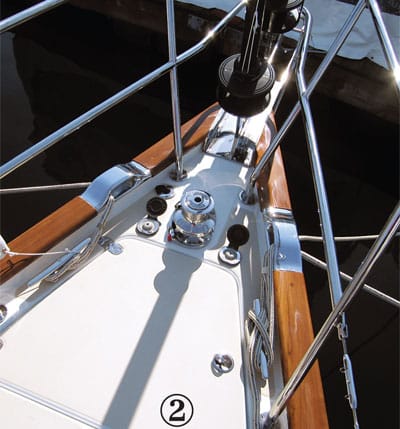
tartan4000.jpg
This American builder still offers a traditional foredeck complete with bulwarks, closed chocks, a deck-level windlass, double rollers, and a wraparound pulpit. Alvah Simon
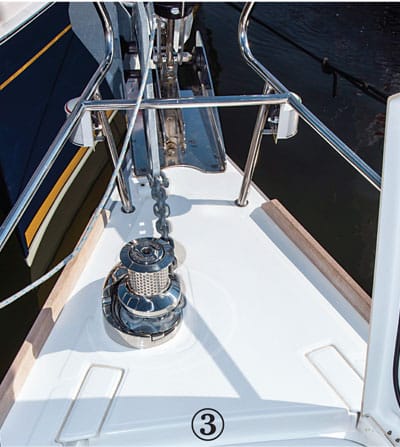
sense55.jpg
In its new Sense series, Beneteau has opted for a traditional deck-mounted windlass with an interior rode locker. On modern boats, the once ubiquitous samson post is a thing of the past. Chain stops or nylon bridles can ease loads on the windlass. Billy Black
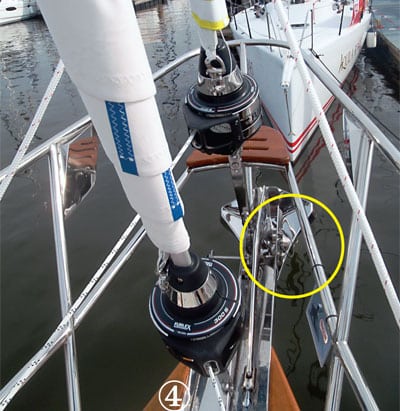
passport-vista545.jpg
Larger cruisers such as this Passport now offer “dolphin-watching” teak seats forward, a nice touch. Small details—for instance, an anchor retainer pin with a captive lanyard (circled)—make efficient foredecks. Alvah Simon
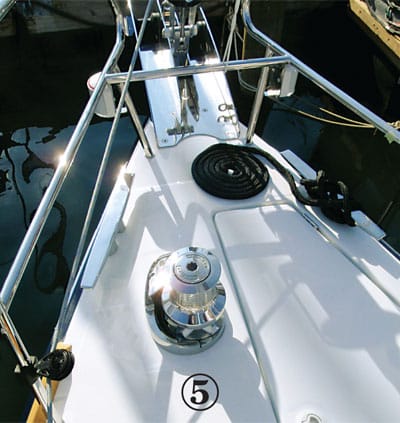
jeanneau509.jpg
On many new boats, cleats are placed well outboard, eliminating the need to use chocks as fairleads. But if the cleats are mounted too far forward, lines run through the bow rollers won’t have a fair lead to the cleat. Alvah Simon
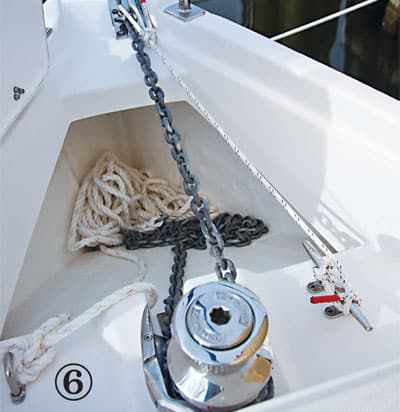
hunter-e33.jpg
This simple, sensible setup consists of a recessed windlass and a full-size locker lid opening to a generous storage space. The chain lead is fair, and there’s even a dedicated cleat for a snubber. Billy Black
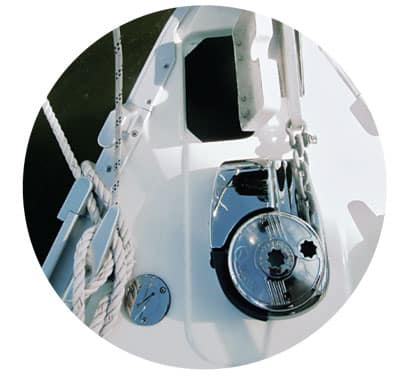
bavaria36.jpg
With a hatch this small, it’s essential to have quick, convenient interior access to the rode locker. Note: The cleats are installed too close to the chock and rub-rail, leaving minimal room for linehandling. Billy Black
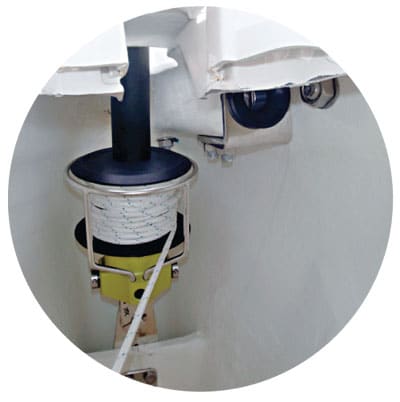
xp38.jpg
In a quest for clean lines and crisp aesthetics on deck, some builders now opt for headsail furling drums that are recessed belowdecks. They look great, but one potential downside is a smaller windlass than might otherwise be specified. Click here for more in our Design Trends series. CW contributing editor Alvah Simon earned his advance degree in foredeck assessment as a judge in the 2013 Boat of the Year contest. Billy Black








